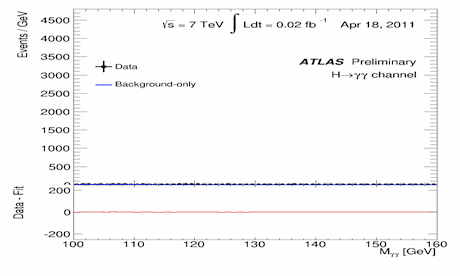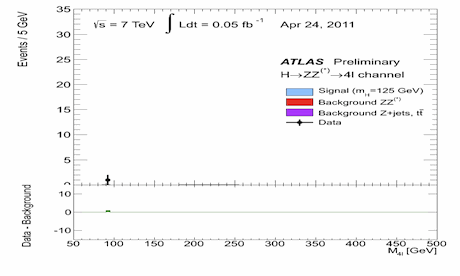The Large Hadron Collider (or LHC) lies in a 27 km-long circular tunnel on the Swiss-French border near Geneva. It was built to collide protons together, head-on, at the highest energies ever achieved. These collisions allow the LHC to function as the world’s most powerful microscope, probing the structure of matter at the tiniest distances, potentially looking inside fundamental particles like quarks and electrons — so far thought to not made up of even smaller particles — as well as potentially creating new particles, and discovering new forces between them.
The biggest discovery at the LHC so far was a new particle known as the Higgs boson. This particle was first postulated by a group of six physicists in 1964 who were trying to come up with a way of allowing fundamental particles to have mass. The answer they came up with was that the whole universe was permeated with a new quantum field, where the mass of a particle comes about via its interactions with this field.
This worked from a mathematical point of view, but it is a big leap to propose that such a quantum field really exists just based on theory. Some experimental evidence was required. The only direct way of obtaining such evidence would be to hit this background field of the universe so hard that a ripple — a quantum excitation — is created in the field. This would manifest itself as a new particle: the Higgs boson. This is one of the things the LHC was designed to do, and in 2012, the new Higgs boson particle was discovered.
The two experiments involved, ATLAS and CMS, are now in the process of trying to measure as much about this boson as they can. So far, everything we know about it is consistent with it being the same Higgs boson as proposed in the Standard Model of particle physics. This is evidence that we really do understand the origin of the masses of fundamental particles, and evidence that the Standard Model of particle physics is valid up to much higher energies than many physicists might have expected.
The Higgs boson discovery was made under intense pressure: pressure of competition between ATLAS and CMS, and, at least initially, with the Tevatron experiments in the USA. Everyone was very excited, the media were following every twist and turn, and public interest was high. Let’s focus on two animations, made by the ATLAS collaboration. Here’s the first one:
 Animation 1: Mass distribution from photon-pair events (ATLAS experiment)
Animation 1: Mass distribution from photon-pair events (ATLAS experiment)
To make this distribution, we collect proton-proton collisions and look for pairs of isolated high-energy photons resulting from the collisions. Photons are quanta of light, but the ones measured here are about ten billion times more energetic than photons of visible light.
Once we have two photons and their measured energies, we hypothesize that they were the result of the decay of some particle produced in the collision. We then combine their momenta to work out what the mass of that particle might be. In most cases, the hypothesis is false, and we see a smoothly falling distribution of masses. If there were a new particle in there, there would be an excess of pairs of photons at a mass corresponding to the mass of the new particle. In the animation, mass is on the x-axis, and the number of pairs of photons created is on the y-axis.
As you watch the animation, you can see that, over time, more and more photon pairs are collected. There are fake “bumps” in the distribution everywhere, but these are statistically insignificant. That’s when you have to keep calm and carry on with the experiment, despite the tension. You collect more data. In the meantime, you try all kinds of tricks to make sure you are measuring the mass of the photon pairs correctly — you calibrate the detector. How sure are you of where on the horizontal axis a given photon pair should appear?
Watch the distribution. Eventually it gets smoother, all except for a glitch around 125 GeV, which gets more and more significant until in the end there is a clear bump — this is the sign of a new particle.
In parallel, the other major distribution currently being shown in Animation 2 is the mass distribution for “four-lepton” events.
 Animation 2: Mass distribution from four-lepton events (ATLAS experiment)
Animation 2: Mass distribution from four-lepton events (ATLAS experiment)
“Four leptons” means that, resulting from the collision, there were two electron-positron pairs or two muon-antimuon pairs, or one of each pair. If you combine the momenta of these four leptons to get a mass, you can search for a new particle. These events are very rare, whether or not a Higgs boson is created. It is a different kind of exercise in statistics and in patience watching this distribution build up. There are two expected peaks: one from the Z boson (which carries the weak nuclear force and has a mass of 90 GeV) and one from the threshold at which a pair of Z bosons can be made (starting at about twice the Z mass — 180 GeV). However, as we see the distribution build up, a peak in between the Z bosons begins to form. This is, again, the sign of a new particle: the Higgs boson.